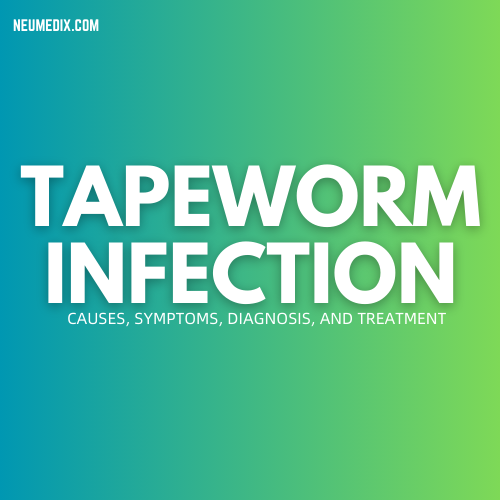1. Introduction to Tapeworm Infection: Tapeworm infection, also known as taeniasis, is a parasitic infection caused by tapeworms that can affect humans and animals. Tapeworms are flatworms that live in the intestines of their hosts and can cause a range of symptoms depending on the species and location of the infection.
2. Causes of Tapeworm Infection:
- Consumption of Contaminated Food or Water: Tapeworm eggs or larvae can be present in undercooked or raw meat, particularly pork, beef, or fish, as well as contaminated water.
- Poor Hygiene Practices: Poor hygiene, such as inadequate handwashing after using the restroom or handling contaminated food, can lead to tapeworm infection.
- Exposure to Infected Animals: Direct contact with infected animals or ingestion of food or water contaminated with tapeworm eggs shed in animal feces can transmit the infection.
3. Symptoms of Tapeworm Infection:
- Abdominal Pain or Discomfort: Some individuals may experience abdominal pain, cramping, or discomfort.
- Nausea and Vomiting: Nausea and vomiting may occur, especially if the tapeworm infection is accompanied by other gastrointestinal symptoms.
- Weight Loss: Tapeworm infection can lead to weight loss or failure to gain weight, particularly in children.
- Weakness and Fatigue: General weakness, fatigue, or malaise may be present, especially in cases of severe or chronic tapeworm infection.
- Visible Segments in Stool: In some cases, tapeworm segments may be visible in the stool, resembling small, white, or yellowish rice grains.
4. Diagnosis of Tapeworm Infection:
- Stool Examination: A stool sample may be collected and examined under a microscope to detect tapeworm eggs or segments.
- Imaging Studies: Imaging tests such as abdominal ultrasound or computed tomography (CT) scans may be performed to visualize tapeworms or cysts in the intestines or other organs.
- Blood Tests: Blood tests may be conducted to detect specific antibodies or antigens associated with tapeworm infection.
5. Treatment of Tapeworm Infection:
- Anthelminthic Medications: Anthelminthic medications such as praziquantel, albendazole, or niclosamide are commonly prescribed to treat tapeworm infection. These medications work by killing the tapeworms or preventing them from absorbing nutrients, leading to their expulsion from the body.
- Surgical Removal: In cases of severe or complicated tapeworm infection, surgical removal of tapeworms or cysts may be necessary, particularly if they have migrated to other organs or tissues.
- Prevention of Reinfection: To prevent reinfection and transmission of tapeworm infection, it is essential to practice good hygiene, including thorough handwashing, proper food handling and preparation, and avoiding consumption of undercooked or raw meat.
6. Conclusion: Tapeworm infection is a parasitic infection caused by tapeworms that can affect humans and animals. It is commonly transmitted through consumption of contaminated food or water or direct contact with infected animals. Symptoms of tapeworm infection may vary depending on the species and location of the infection but may include abdominal pain, nausea, vomiting, weight loss, and weakness. Diagnosis is typically based on stool examination, imaging studies, and blood tests. Treatment involves the use of anthelminthic medications to kill the tapeworms or surgical removal in severe cases. Prevention measures include practicing good hygiene and avoiding consumption of undercooked or raw meat. If you suspect you have a tapeworm infection, seek medical attention for diagnosis and appropriate treatment.




